Why a Camp Kitchen Box is Indispensable
If you’re an avid camper or outdoor enthusiast, you know that meal preparation in the wild can be challenging without proper equipment. This is where a camp kitchen box comes into play. Designed to streamline your culinary experience, these boxes provide everything you need to cook delicious meals while minimizing clutter and maximizing efficiency. Whether you’re hiking through rugged terrain or relaxing at a lakeside campground, having a well-organized camp kitchen box ensures your cooking process remains smooth and enjoyable.
The primary advantage of a camp kitchen box lies in its versatility. It serves as both a storage solution and a workspace, combining multiple functions into one compact unit. Inside, you’ll find designated compartments for utensils, spices, cookware, and even perishable items like condiments. Additionally, many models come with features such as cutting boards, integrated trash bags, and collapsible bowls, making them ideal for various outdoor activities. By investing in a quality camp kitchen box, you set yourself up for success in any cooking scenario.
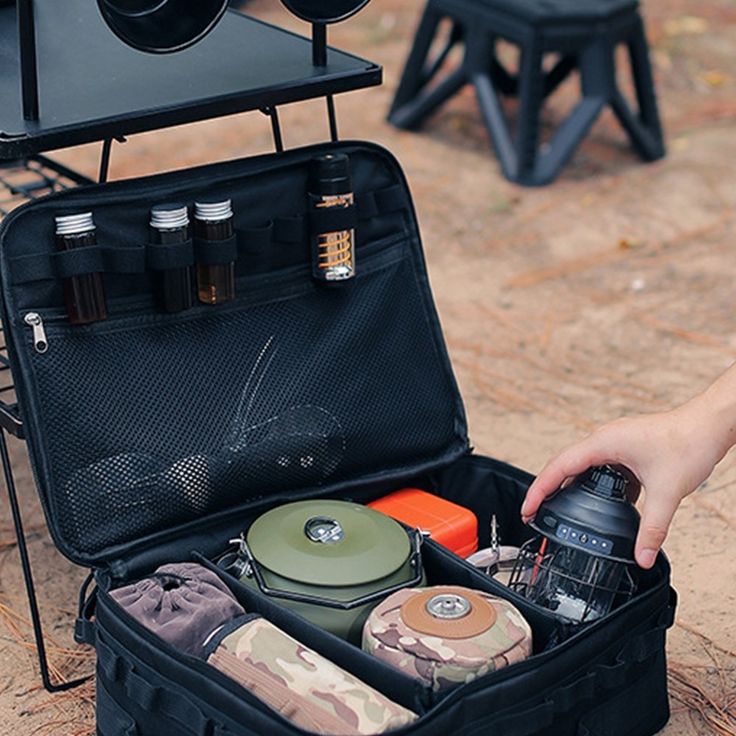
Moreover, the convenience factor cannot be overstated. Imagine being able to access all your essential tools and ingredients in one place, eliminating the need to rummage through multiple bags or containers. This level of organization not only saves time but also reduces stress during busy camping trips. As we delve deeper into this topic, you’ll discover why a camp kitchen box should be at the top of your must-have list for outdoor adventures.
Understanding the Anatomy of a Camp Kitchen Box
To fully appreciate the value of a camp kitchen box, it’s essential to understand its design and components. Modern boxes are crafted from durable materials like waterproof canvas, aluminum, or reinforced plastic, ensuring they withstand harsh weather conditions and rough handling. The interior layout typically includes several key sections:
- Utensil Holder: A dedicated space for forks, knives, spoons, spatulas, and other essential tools.
- Cookware Compartment: Room for pots, pans, and lids, often stackable to save space.
- Food Storage Area: Pockets or bins for snacks, seasonings, and dry goods. Some advanced models feature insulated compartments for cold items.
- Trash Management: Built-in bags or nets to keep waste contained and out of sight.
These thoughtful designs cater to different preferences and needs. For example, backpackers may prefer lightweight, foldable options, while car campers might opt for larger, more robust kits. Additionally, some boxes include innovative features like magnetic closures, adjustable shelving, and expandable compartments. These additions enhance usability and adaptability, allowing users to customize their setup based on specific requirements.
Furthermore, understanding the material composition of your camp kitchen box is crucial. Lightweight yet durable materials ensure portability without compromising strength. Waterproof coatings protect against moisture damage, while reinforced stitching prevents tears or rips during extended use. By carefully selecting a model with appropriate materials and features, you can optimize performance and longevity.
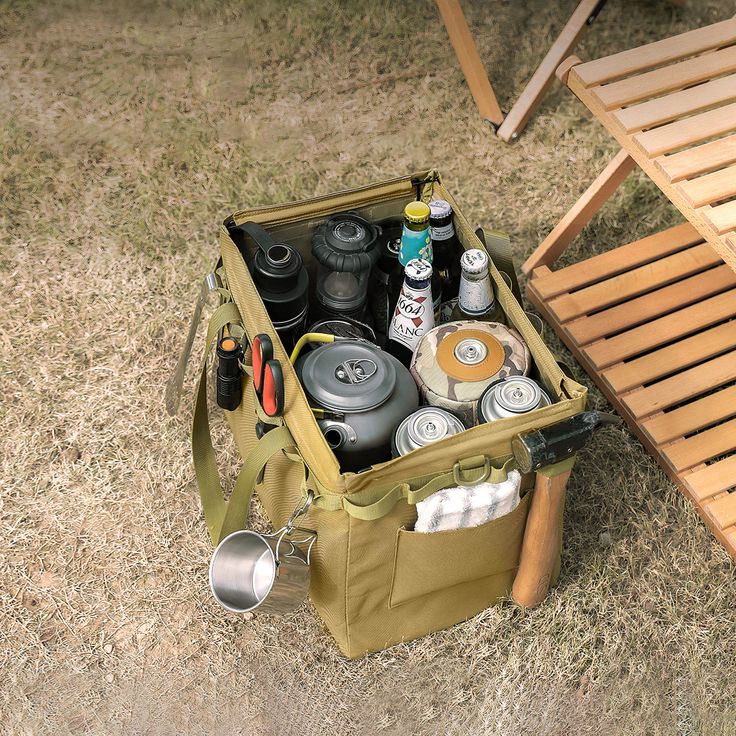
Benefits Beyond Convenience
While the convenience of a camp kitchen box is undeniable, its advantages extend far beyond simple organization. One major benefit is the reduction of environmental impact. By keeping all your supplies neatly packed, you minimize the risk of littering or losing items during transit. Furthermore, many boxes encourage reusable alternatives to single-use plastics, promoting sustainable practices in the great outdoors.
Another perk is improved safety. With sharp objects securely stored and hazardous materials kept separate, accidents become less likely. Additionally, some camp kitchen boxes include first-aid essentials or emergency tools, providing peace of mind in case of unexpected situations. Lastly, the social aspect shouldn’t be overlooked. Having a well-equipped kitchen setup fosters camaraderie among fellow campers, encouraging shared meals and collaborative efforts.
From a practical standpoint, camp kitchen boxes also contribute to better meal planning. Preparing ingredients ahead of time and storing them in labeled compartments makes cooking faster and more efficient. This systematic approach helps conserve energy and resources, especially important when camping in remote locations. Overall, the benefits of a camp kitchen box go beyond mere convenience—they enhance every aspect of your outdoor experience.
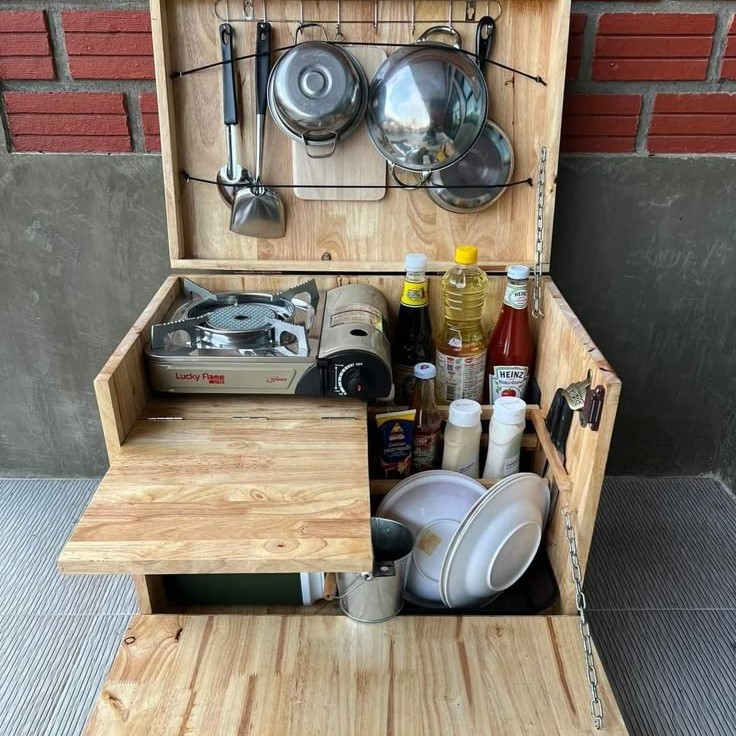
Choosing the Right Camp Kitchen Box for Your Needs
Selecting the perfect camp kitchen box involves considering several factors. First, evaluate the type of outdoor activity you plan to engage in. Backpackers, for instance, prioritize portability and weight, so lightweight, compact options work best. On the other hand, family campers who travel by vehicle may focus on capacity and durability, opting for sturdier, roomier designs.
Next, assess your cooking style and dietary requirements. Do you enjoy elaborate dishes requiring numerous utensils and ingredients? Or do you prefer quick, no-fuss meals with minimal prep? Answering these questions will help narrow down your choices. Look for features tailored to your preferences, such as adjustable shelving, magnetic closures, or expandable compartments.
Lastly, consider budget constraints. While premium models offer top-tier quality, affordable options exist that still meet basic needs. Reading reviews and comparing specifications can guide you toward the most cost-effective solution. Remember, the goal is to find a balance between functionality, affordability, and personal preference.
For those new to camping, starting with a mid-range option might be wise. These models usually strike a good balance between price and features, offering enough versatility for most scenarios without breaking the bank. Experienced campers, however, may wish to invest in high-end kits equipped with specialized accessories for advanced cooking techniques. Regardless of your skill level, taking the time to research and compare options ensures you make an informed decision.
Common Mistakes
Despite their usefulness, camp kitchen boxes can sometimes lead to frustration if used improperly. One common mistake is overpacking. Stuffing too many items into the box compromises accessibility and increases the likelihood of damage. Instead, pack only what you truly need, leaving enough space for easy retrieval.
Another error is neglecting cleanliness. Failing to wipe down surfaces or empty food containers after use invites pests and odors. Regular maintenance ensures your camp kitchen box stays fresh and hygienic throughout your trip. Similarly, ignoring weatherproofing measures can result in water damage or mold growth. Always store your box in a dry location, especially during rainstorms.
Lastly, underestimating the importance of organization can hinder efficiency. Without a clear system for categorizing items, finding what you need becomes a guessing game. Labeling compartments or color-coding similar items streamlines the process and saves valuable time. Avoiding these pitfalls allows you to get the most out of your camp kitchen box experience.
Tips for Maintaining
Proper maintenance extends the life of your camp kitchen box and keeps it functioning optimally. After each use, thoroughly clean the interior and exterior using mild soap and water. Pay special attention to crevices and corners where crumbs or spills may accumulate. Allow the box to air-dry completely before storing it away, preventing moisture buildup that could cause mildew.
Periodically inspect the hardware for signs of wear or damage. Tighten loose screws, replace broken zippers, and reinforce weak seams as needed. Investing in protective covers or carrying cases further safeguards your investment against scratches or impacts. Additionally, organizing seasonal checkups ensures everything remains in working order when you need it most.
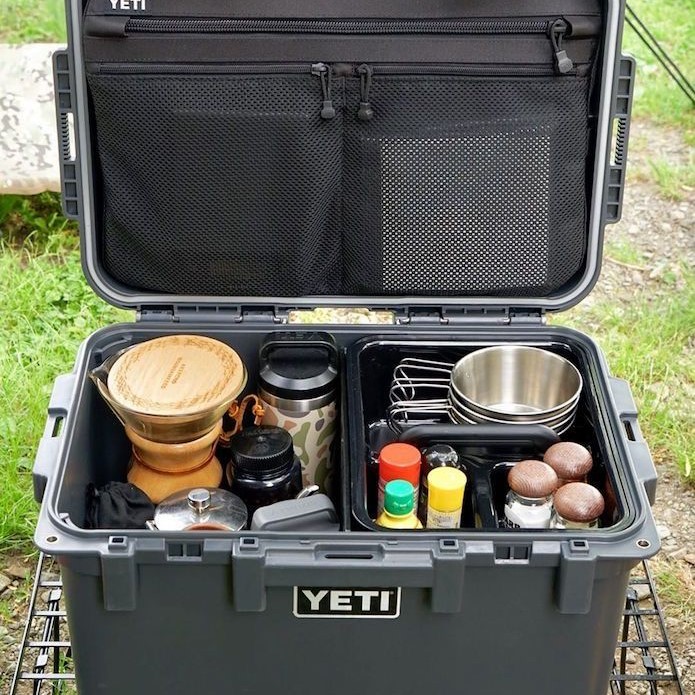
For extended trips, consider packing extra cleaning supplies, such as wipes or biodegradable detergents, to maintain hygiene on the go. Keeping spare parts, like replacement straps or clips, handy prevents minor issues from becoming major headaches. With regular upkeep, your camp kitchen box will remain reliable and efficient for years to come.
Creative Uses
Beyond traditional meal prep, a camp kitchen box offers endless possibilities for creative applications. Use it as a mobile craft station for DIY projects, complete with scissors, glue, and art supplies. Alternatively, transform it into a mini bar for tailgate parties, stocked with glasses, mixers, and snacks. Its modular design lends itself well to customization based on specific events or hobbies.
In addition, educational settings benefit from camp kitchen boxes. Teachers leading outdoor programs can fill them with science kits, books, or art materials, creating portable classrooms for hands-on learning. Families teaching children about sustainability can incorporate reusable items, fostering eco-conscious habits from a young age. These innovative uses highlight the adaptability of camp kitchen boxes across diverse scenarios.
Imagine repurposing your camp kitchen box for disaster preparedness. Equipped with emergency rations, water purification tablets, and basic medical supplies, it becomes a lifesaving toolkit during unforeseen circumstances. Similarly, photographers or videographers could utilize it as a portable gear organizer, housing lenses, batteries, and memory cards in its secure compartments. The possibilities are limited only by your imagination.
Maximizing Efficiency with Proper Organization
Efficient organization is the cornerstone of successful camp kitchen box usage. Start by grouping similar items together—utensils in one section, spices in another, and so forth. Use dividers or small containers to create distinct zones within the box, reducing clutter and enhancing accessibility. For frequently used items, assign easily reachable positions, ensuring quick access during meal prep.
Labeling compartments adds an extra layer of clarity, particularly helpful for group camping trips where multiple people share the same box. Color-coded tags or symbols can further simplify navigation, especially for younger participants or those unfamiliar with the setup. Additionally, consider implementing a “first-in, last-out” strategy for perishable goods, prioritizing older items to prevent spoilage.
Advanced organizers might explore digital tools to complement their physical systems. Apps designed for inventory management allow users to track contents, expiration dates, and restocking needs, streamlining the entire process. Combining technology with traditional methods creates a comprehensive organizational framework that maximizes efficiency and minimizes waste.
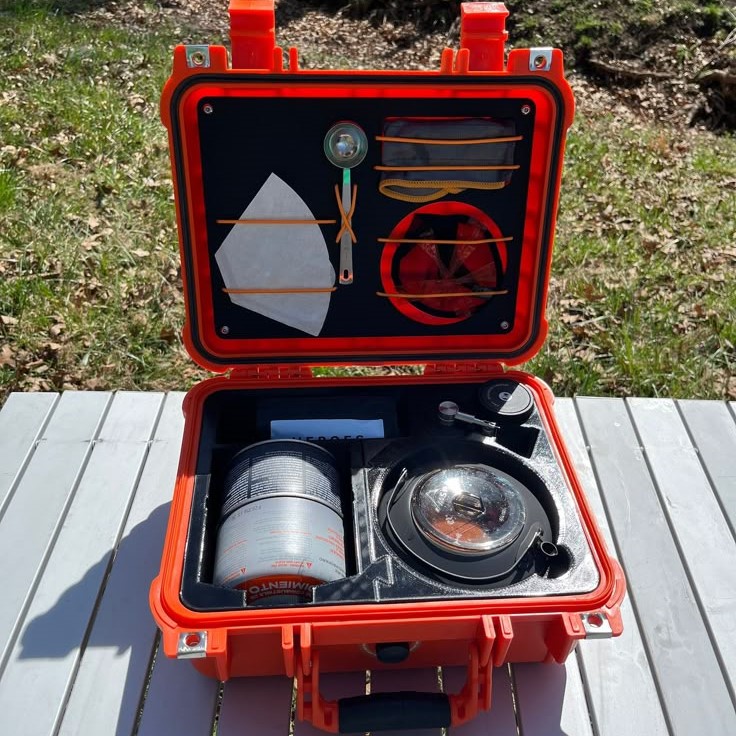
Conclusion
In conclusion, a camp kitchen box is more than just a piece of gear—it’s a cornerstone of successful outdoor adventures. From simplifying meal preparation to enhancing organization and safety, its benefits are undeniable. By following the tips outlined in this article, you can select, maintain, and maximize the potential of your camp kitchen box for unforgettable experiences.
Remember, the right tools make all the difference in turning ordinary outings into extraordinary memories. So whether you’re exploring remote trails or enjoying peaceful evenings under the stars, let your camp kitchen box be the foundation of your culinary journey. Happy camping!